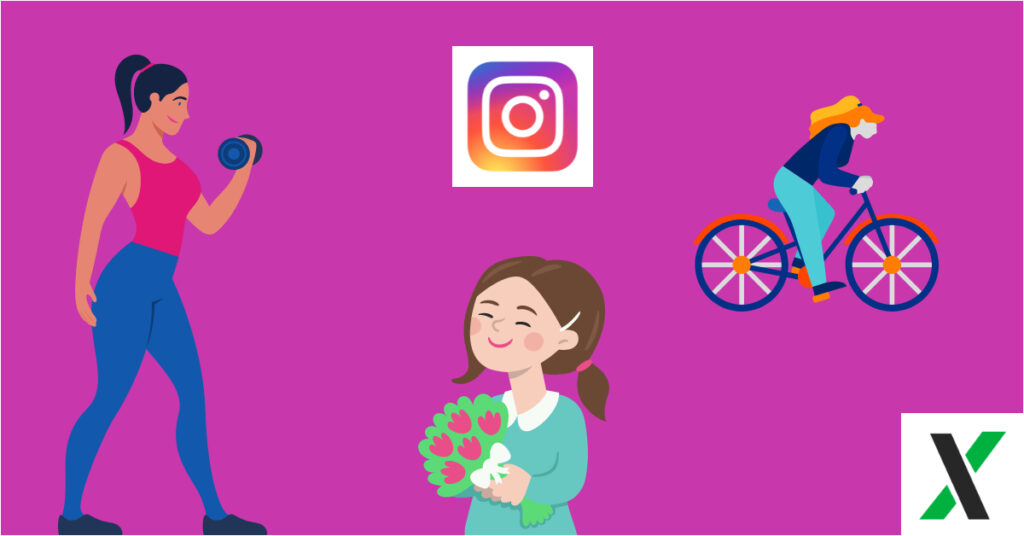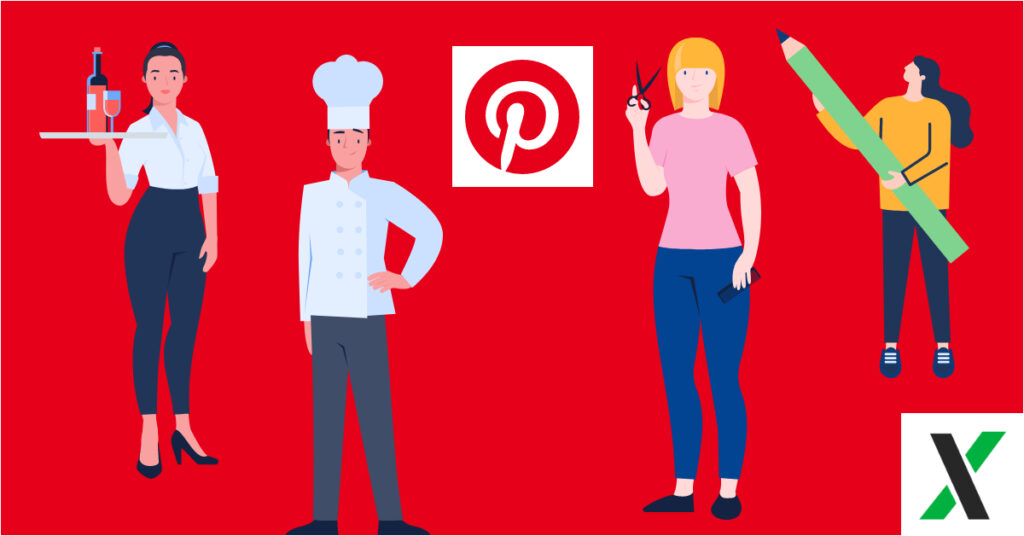Social media marketing: Easiest & Best Guide 2023
Based on 2021 HubSpot Blog Research, marketers prioritize promoting their products/services and elevating brand recognition on social media. Nonetheless, numerous brands face challenges in producing captivating content and effectively reaching their intended audience. With regards to the significant role of social media in the initial stages of customer engagement, let’s explore the world of social media marketing, including its definition, advantages, and practical techniques for constructing a tailored strategy that yields results for your unique business.
1. What Is Social Media Marketing?
Social media marketing involves crafting content specifically for social media platforms to advertise your products and/or services, cultivate a community with your intended audience, and generate traffic for your business. Given the continuous emergence of new platforms and features, social media marketing is in a constant state of evolution.
The essence of social media marketing lies in engaging with your target audience and customers where they actively participate and interact with your brand, as well as with each other.
Although social media marketing holds immense value and offers numerous benefits for business growth (which will be discussed in the subsequent section), the strategies employed will vary depending on the specific social networks that your audience frequents.
2. What Are The Best Social Media Marketing Platforms?

Active Users: 1.9 billion worldwide daily
Target Audience: Generation X and Millennials evenly represented
Industry Impact: B2C
Ideal for: Brand awareness, advertising
Facebook, the largest and most established social media platform, has become an indispensable tool for B2C businesses since its launch in 2004. It offers advanced advertising tools and organic opportunities.
TikTok

Active Users: 1 billion global monthly users
Target Audience: Primarily Gen Z, followed by Millennials
Industry Impact: B2B and B2C
Ideal for: Short-form, creative video content; user-generated content; brand awareness
TikTok, renowned for short-form videos, gained significant popularity in 2020 and continues to thrive. Finally, It is worth noting that it excels in community building, with marketers ranking it second only to YouTube.

Active Users: 1 billion monthly users
Target Audience: Primarily Millennials
Industry Impact: B2C
Ideal for: High-quality images and videos; user-generated content; advertising
Despite being launched just 12 years ago, Instagram has taken the world by storm. Moreover, It is the go-to platform for visually compelling content, and its advanced ecommerce tools set it apart.

Active Users: 211 million worldwide daily
Target Audience: Primarily Millennials
Industry Impact: B2B and B2C
Ideal for: Public relations, customer service, community building
While Instagram focuses on visuals, Twitter emphasizes words. The platform has expanded beyond 140-character tweets and now includes features such as Twitter Spaces for audio, Twitter Communities for community building, and Twitter Moments for sharing interesting content.

Active Users: 774 million worldwide
Target Audience: Baby boomers, Generation X, and Millennials
Industry Impact: B2B
Ideal for: B2B relationships, business development, social selling
Indeed, LinkedIn serves as Facebook’s professional counterpart, catering to working professionals seeking networking and new opportunities. In addition, It is an ideal platform for B2B companies to identify decision-makers and foster industry-specific communities.
YouTube

Active Users: Over 315 million worldwide daily
Target Audience: Primarily Millennials, with a strong audience across genders and age groups
Industry Impact: B2C and B2B
Ideal for: Brand awareness, long-form entertainment, how-to videos
According to HootSuite, YouTube is the second most visited website globally and ranks as the best platform for community building. Moreover, Its popularity stems from hosting predominantly long-form content, making it ideal for sharing educational materials.
Snapchat

Active Users: 306 million worldwide daily
Target Audience: Primarily Generation Z
Industry Impact: B2C
Ideal for: Brand awareness, advertising
Snapchat, known for pioneering ephemeral content in 2011, allows users to share content with friends that disappears after 24 hours. Despite competition from Instagram’s Stories feature, Snapchat remains popular among young adults.

Active Users: 444 million worldwide monthly
Target Audience: Primarily Millennials, with a solid presence among Gen Z, Gen X, and Baby Boomers
Industry Impact: B2C
Ideal for: Visual advertising, inspiration
Pinterest serves as a visual storyboard, where users find inspiration for various interests, from fashion to home decor. Also, the platform is instrumental for launching new projects, and a significant percentage of users discover new brands and products on Pinterest.
Clubhouse

Active Users: 10 million worldwide weekly
Target Audience: Primarily Millennials
Industry Impact: B2B and B2C
Ideal for: Building community, fostering conversations
Clubhouse made a notable entry into the social media landscape in 2020 as an audio-only platform that enables engaging conversations among followers and strangers. Its invitation-only setup during beta testing garnered attention, but the platform is now open globally on both iOS and Android devices. It appeals to both B2B and B2C businesses and capitalizes on the resurgence of audio content.
Emerging Social Media Platforms
With regards to recent HubSpot Blog Research, marketers are constantly exploring new and emerging platforms. Therefore, being an early adopter can give your brand an advantage. Platforms like TikTok, Clubhouse, Discord, Flyy, and SpaceHey offer unique opportunities to reach your target audience effectively.
Finally, to stay informed about emerging platforms, read articles highlighting new social media platforms to watch out for this year.
Now that we have explored the fundamental aspects of each social media network, let’s delve into the benefits of social media marketing for your business.
FREE Gift: SEO Blog Article?
We will give you a free but valuable gift, an SEO. optimized blog article.
Sign up to get the latest blog updates including the latest tips, tricks and special offers. Of course, you can unsubscribe at any time. Moreover. we respect your privacy and we will never share your information.
What are the benefits of Social Media Marketing?
To demonstrate the advantages of social media marketing, let’s examine it from a user’s perspective, my perspective. Firstly, as I browse through my Linkedin, facebook and Instagram feed multiple times a day, I often come across new posts and stories from multiple companies. Moreover, I’ve always of s been a fan of and appreciate captivating content which informs and inspires me. In contrast, I turn off to content which does the opposite.
Straightaway, I am drawn to amazing colourful creatives. Because companies consistently use specific filters and branding tool kits across all their graphics gives their pages a professional, artistic, and organized appearance, enhancing the browsing experience for visitors like myself.
Moreover, most top brands actively encourages interaction with their followers by providing a dedicated hashtag for users to showcase their photos featuring their interactions resulting in increased engagement, brand identity and direct sales.
But why is social media marketing so crucial? Furthermore, how can you develop a social media marketing strategy that aligns with your specific business?
There are various reasons why your company should leverage social media marketing, in addition, we have compiled a list of the most significant benefits to consider. Let’s explore them.
Expand Brand Awareness
All things considered, with the vast number of people on social media platforms, having a presence is essential to reaching potentially thousands or even millions of users. Social media has proven to increase brand awareness by driving engagement through activities like comments, likes, shares, reposts, and saves. It also directs traffic to your website by including direct links in your profile, bio, and posts.
Generate Leads and Enhance Conversions:
Utilizing social media to promote and share your products is an effective way to generate leads, improve conversions, and boost sales. You are advertising to individuals who have actively chosen to engage with your brand by following your account.
Consider the following methods to generate more leads through social media:
Organize contests for your followers to participate in on your social media profiles.
Incorporate links to your website and offers in the bio sections of your profiles.
Utilize live videos to make product announcements, provide updates, and share exciting news.
Implement social media marketing campaigns on your channels.
Enable e-commerce features on platforms like Facebook or Instagram to sell products directly through your profiles.
Foster Customer Relationships
Engaging and connecting with your social media followers allows you to build lasting relationships between them and your business. Interacting with them through comments, responding to their inquiries, and offering assistance helps establish trust and loyalty. Asking for their feedback, addressing their pain points, or running giveaways demonstrates how much you value their input and support.
Learn From Competitors
Social media provides valuable insights into your competitors’ strategies, promotions, campaigns, and interactions with their followers. Monitoring your competitors’ social media presence helps you understand what works and what doesn’t, enabling you to refine your own marketing approach. Additionally, analyzing their accounts ensures your marketing efforts stand out and remain unique to your brand.
Now that is done, let’s delve into the strategic aspect. It’s important to realize that Implementing an effective social media marketing plan involves several steps to ensure its long-term success and positive impact on your business.
How to create a Social Media Marketing Strategy?
Creating a Social Media Marketing Strategy
To develop an effective social media marketing strategy, it’s important to follow a set of foundational steps. Although social media is constantly evolving, these steps remain consistent. Essentially, you’re adapting general marketing strategy principles to the specific channel of social media. Let’s explore these steps in more detail to help you apply them to your business.
Step 1: Research your buyer personas and audience.
The first step is to thoroughly understand your buyer personas and target audience. By defining who your ideal customers are and what their interests and needs are, you can tailor your social media content to resonate with them effectively. For example, if you sell trendy athletic apparel targeted at millennials who embrace athleisure fashion, you need to create content that appeals to their style and preferences. Use buyer persona templates or tools like HubSpot’s Make My Persona to assist you in this process.
Step 2: Determine the social platforms for your marketing.
It’s crucial to identify the social media platforms where you will share your content. Consider the platforms that align with the preferences and behaviors of your target audience. There isn’t a definitive right or wrong answer, as it depends on your audience’s habits. Being present on the platforms where your potential customers are active today and potentially in the future is vital. For instance, if your target audience consists of athleisure-loving millennials, focusing your efforts on Instagram may be ideal, as it attracts a large portion of this demographic.
Step 3: Establish your key metrics and KPIs.
Define the metrics and key performance indicators (KPIs) that are most important for tracking the success of your social media marketing efforts. These metrics could include engagement rates, reach, conversions, click-through rates, or any other relevant data points. Setting clear goals and metrics allows you to measure your progress and make informed decisions to optimize your strategy.
Step 4: Analyze your competition.
Take the time to research and analyze your competitors’ social media presence. Understand their strategies, the platforms they use, the content they share, and their interactions with followers. This analysis helps you gain insights into effective tactics and differentiate your own marketing efforts to stand out from the competition.
Step 5: Create unique and engaging content.
Develop compelling and original content that aligns with your audience’s interests and preferences. Use a mix of formats such as images, videos, infographics, and written posts to keep your content fresh and engaging. Strive to provide value, entertain, educate, or inspire your audience. Remember to maintain a consistent brand voice and visual identity across all your content to reinforce your brand image.
Step 6: Establish a posting schedule.
Organize a posting schedule to ensure consistent and regular content distribution. Determine the frequency and timing of your posts based on your audience’s online behavior and the platform’s algorithms. Consistency is key in maintaining engagement and visibility among your followers. Use social media scheduling tools or built-in platform features to plan and automate your posts.
By following these steps, you can create a comprehensive social media marketing strategy tailored to your specific business needs.
Start Your Social Media Marketing Journey
With billions of people on social media, it’s crucial to leverage this channel to promote your products and engage with customers. By understanding social media marketing trends and utilizing the available resources, you can overcome any initial hesitation and develop a solid social media strategy. Start today to increase your follower count, improve engagement, and drive conversions.